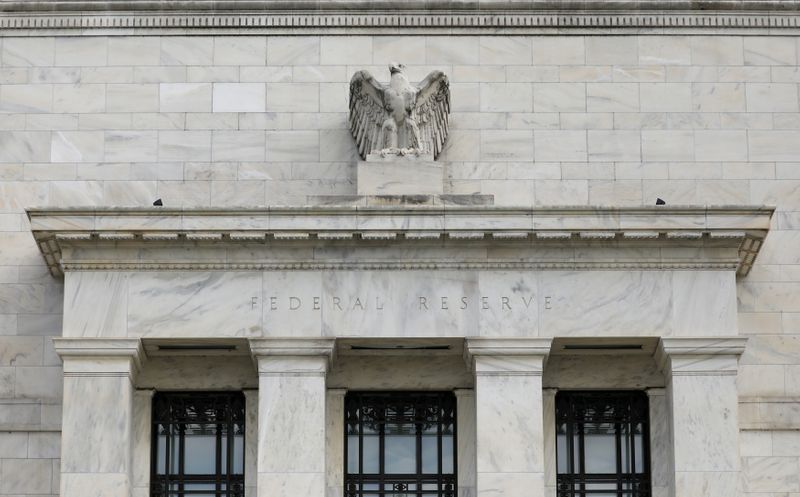By Howard Schneider
WASHINGTON (Reuters) - Two former top staffers at the U.S. Federal Reserve have joined in urging the Fed to say explicitly what it will do if interest rates hit zero again, and warned that even with the best laid plan the central bank "might simply run out of...firepower," if a downturn is bad enough.
A promise to leave rates at zero until the central bank's job and inflation goals are met, coupled with perhaps a trillion dollars a year in bond purchases, may be the Fed's best hope of beating the next recession, and even then may fall short, former Fed research director David Wilcox and former top adviser William Reifschneider said in a paper released on Wednesday.
"It would be very much in the interest of the (Federal Open Market Committee) and the public to be as clear as possible about the factors that will guide its rate-setting behavior and asset purchases in the event of a recession," the two said, arguing that promises to leave rates untouched until specific economic goals were met proved among the central bank's more influential tools following the 2007 to 2009 economic crisis.
With this week's surprise rate cut by the Fed, their recommendations may take on some urgency.
To work, the sort of aggressive promise-making they suggest would need to be made well ahead of the next downturn and to be understood and taken seriously by markets and households.
The two said their research "would seem to suggest that a combination of low interest rate guidance and (bondbuying) could readily overcome" the issues associated with rates again hitting zero.
Once rates hit zero a central bank loses its most familiar way to support the economy and has to consider less conventional tools such as "forward guidance" about rates or the bondbuying that beefed up the Fed's balance sheet to more than $4 trillion in the post-crisis years. By boosting demand for bonds, the Fed aims to lower interest rates for related securities like home mortgages, thus encouraging homebuying, for example.
The two said a similar amount of bond purchases would likely be needed again in even a mild recession, with rates stuck at zero for perhaps eight years, also on par with the last episode at the "effective lower bound."
A larger downturn might require trillions more in purchases and perhaps 15 years stuck at zero, an outcome reminiscent of the Bank of Japan's extended battle to rekindle inflation and growth. "Prudence strongly suggests," the two wrote, that the limits of the central bank be recognized and fiscal policy be better geared to help respond.
The paper, released through the Peterson Institute for International Economics, is the third high-level call this year for the Fed to use detailed guidance about rates as a main tool in recession fighting, a complement to bondbuying that gives households and investors a clear sense of how long credit costs will remain low.
Former Fed chair Ben Bernanke made a similar recommendation in January, and a group of top outside economists, in reviewing the success of central bank crisis-fighting globally, last month found that explicit forward guidance was among the most effective tools.
The Fed is in the end stages of a review of its monetary policy strategy, with conclusions expected this summer.

Some analysts feel the discussion is becoming uncomfortably relevant. The Fed cut interest rates this week in response to the possible economic shock from the coronavirus outbreak, and some analysts have projected the Fed will be back to zero by the end of the year.